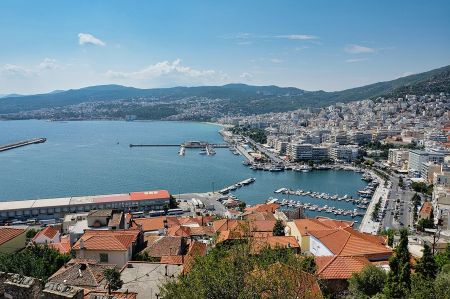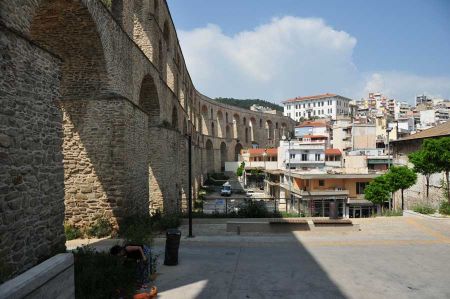From Stobi via Via Egnatia to the campsite in Kavala
- Written by Portal Editor
After the stopover in Stobi in Macedonia (Camperstop) we continued our journey towards Izmir to the opening ceremony of our project at the Goethe Institute.
As a last stop before entering Turkey, we had selected a campsite in Kavala for the upcoming night and made several attempts during the journey to make contact by phone. Unfortunately the contact was not successful. No matter, a campsite does not just disappear, so our thoughts, so let's go to Kavala.

Shortly after leaving the motorway, however, a complex construction site appeared, which had led to the closure of the road. Repentance was necessary and now it was a bit adventurous. Although a replacement route was quickly displayed, which, however, for us initially not apparent, steeply downhill through narrow streets, so that our towing vehicle really had to fight. Without four-wheel drive, a route that should be avoided if possible. On the way back, we chose the route through the narrow inner city, but at least without parked cars at only 5 meters wide street.
Kavala - Camping at the hotel complex
The individual pitches were neatly set and separated from each with bushes from the neighboring plot, a conspicuous but for us currently less significant feature, because we were almost alone, only a few vehicles of permanent campers placed uninhabited locally. When we also found a camping power connection on one of the plot, everything was fine. Only the next morning we met staff, so that the registration and fee payment could be made, before we went back on the Via Egnatia towards the Turkish border.
We were looking forward to the first satellite connection from Turkey. No annoying, country-dependent dialing by national code. That's just great. But now back to the research.
The trade route Via Egnatia and the settlement of Kavala
Kavala is, as clear records say, founded in the 7th century BC by Greek inhabitants of the neighboring island of Thasos as a trading post. Even today Kavala is a commercial and port city of supraregional importance in northern Greece. Here on the Thracian Sea it is the main port of eastern Macedonia, which is still an important source of income for the approximately 70,000 inhabitants. Even a small airport, which is mainly used for domestic flights, is only 30 kilometers away.
They founded fortified settlements and acropolis, which testifies to possible unrest and armed conflicts with the indigenous people. The Thracian tribes residing in the area of interest of the Thasites were active in trade, in the agriculture and wood industry and in the mining industry. Mines and ore huts may have been operated for several centuries on various ores at various locations by the Thracians and processed and traded the metals obtained.
Paul of Tarsus founded Philippi from here
However, Thasos retained its mainland holdings even in times of Macedonian and Roman rule, but sometimes in altered, usually narrower borders. However, it still included the precious metal ores particularly rich part.
In 49, Paul went ashore from Tarsus in today's Kavala and founded the first Christian community on European soil in Philippi. In the Byzantine era, Kavala was accordingly renamed in Christopolis.
The Venetians fortified during their brief occupation of the peninsula Panaghia with a castle. The name Kavala should come from the importance as an important post office, at which the horses (Italian "cavallo") on the Via Egnatia were changed. So at least the vernacular says.
Kavala was part of the Ottoman Empire (Ottoman Empire) from 1371 to 1912.
Even in 1900 Kavala was a rather insignificant settlement with about 6,000 inhabitants. After the Greek-Turkish war in 1922, Greek settlers from Asia Minor settled in Kavala and established villages in the area where they started to grow tobacco. Through the processing and shipping of the tobacco Kavala gained some importance. Between 1941 and 1944, the headquarters of the Bulgarian Aegean fleet was placed in Kavala.
Nuremberg has been the German twin city of Kavala since 1998
Please also read:
After exploring Argilos - the Lion of Amphipolis
Ennea Hodoj to Amphipolis - alternating occupiers
-
-
-
-
-
-
-
-
-
-
-
-
-
-
-
